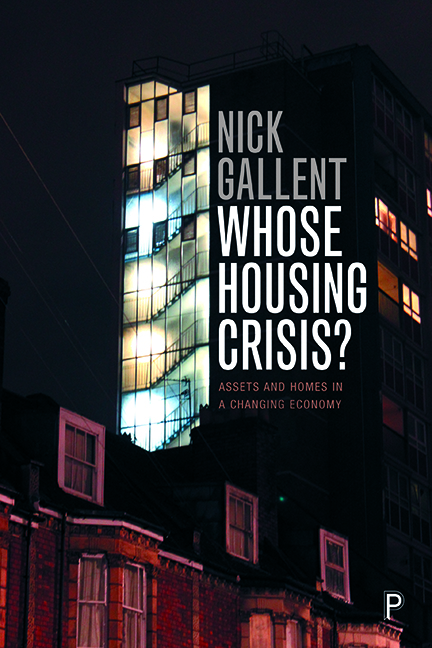3 - Housing’s economic context
Published online by Cambridge University Press: 27 April 2022
Summary
This chapter is concerned with the wider economic canvas introduced in the first two chapters and with the transformation of homes into assets – a focus for investment and a source of income and capital appreciation. The housing crisis is situated in this canvas, and more specifically in the changing profile of the economy and a capital switch into fixed assets (facilitated by the maturation of capital markets and by the various tools of financialisation). There are three crucial narratives here. The first concerns broader economic change and how the UK economy, in the postwar period, became unbalanced – ‘away from business investment and exports’ (Osborne, 2014). The second narrative is the movement of capital into land, property and property-related financial products – a mix of ‘direct’ and ‘indirect’ investment, which risks depriving the wider economy of active capital (business) investment. The third and final narrative concerns the UK's reliance on public revenues (tax take) from investment in fixed assets – commercial and residential property – derived from general property and transaction taxes, which rise with property values and therefore infer clear ‘public’ interest in keeping house prices on an upward track (tax dependence on rising land and property prices is different from the benefits other countries derive from control over land and land rent). These narratives begin at separate points but eventually come together, interacting to shift the function of housing, producing economic volatility, centred on the wider investment market, alongside a dependence on rising house prices.
The chapter is divided into four parts. These are concerned with, first, the UK's shifting economic profile over the last 50 years and investment flows; second, processes behind the switch of capital into fixed assets, and with financialisation – the shift to profit-making through financial channels ‘rather than through trade and commodity production’ (Krippner, 2005: 181; see also Arrighi, 1994); third, with sources of tax revenue and the argument that there is public interest in rising house prices; and fourth, with the interaction of these shifts and their responsibility for critical tensions, and injustices (Rolnik, 2013) in the housing market.
However, before embarking on this journey, one further point needs to be made concerning housing's role in national economies, often as an instrument of economic development.
- Type
- Chapter
- Information
- Whose Housing Crisis?Assets and Homes in a Changing Economy, pp. 47 - 72Publisher: Bristol University PressPrint publication year: 2019



